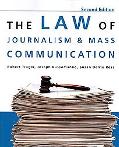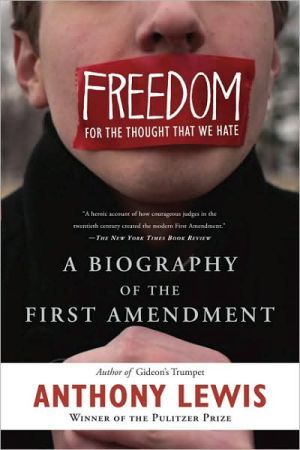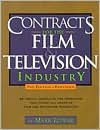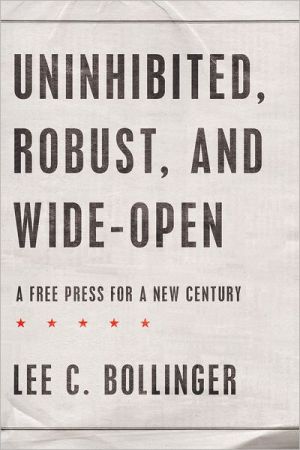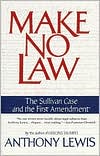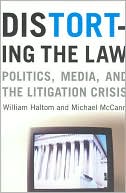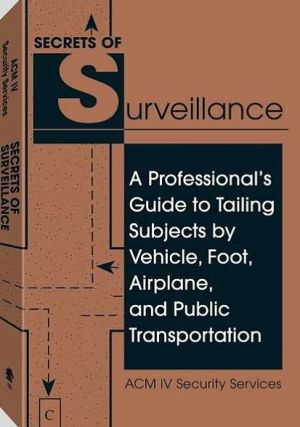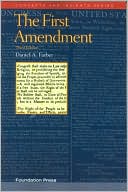The Law Of Journalism and Mass Communication, 2nd Edition
Mining an intense commitment and driving vision to reach today's students, combined with teaching experience of nearly 50 years, the authors of this new text offer an exciting alternative in the field of mass media law. Highly praised by reviewers, the book's dynamic visual design and innovative pedagogy engage contemporary students--complementing the comprehensive coverage and organization seen in traditional texts. The Law of Journalism and Mass Communication features a wealth of new...
Search in google:
Mining an intense commitment and driving vision to reach today's students, combined with teaching experience of nearly 50 years, the authors of this new text offer an exciting alternative in the field of mass media law. Highly praised by reviewers, the book's dynamic visual design and innovative pedagogy engage contemporary students--complementing the comprehensive coverage and organization seen in traditional texts. The Law of Journalism and Mass Communication features a wealth of new elements and strategies that encourage students to read the text closely and aid in critical evaluation of the complex and shifting field of media law.
Chapter 1: The Rule of Law Sources of the Law The Court SystemThe Supreme CourtThe Case ProcessFinding the Law Chapter 2: The First Amendment The Origins of the First AmendmentFoundations of First Amendment TheoryFirst Amendment ValuesContemporary Prior RestraintsContent-Neutral and Content-Based LawsPublic Forums Media Emergence, Convergence & ConsolidationChapter 3: Disruptive Speech: Threats to Social Stability and Personal SafetyThreats to National SecurityClear and Present DangerHate SpeechProtests Hostile AudiencesCompelled SpeechChapter 4: Libel: The Plaintiff’s CaseSome Contemporary IssuesA Brief HistoryStatement of FactPublicationIdentificationDefamationFalsityFaultDamages Chapter 5: Libel: Defense Issues and StrategiesTruthOpinionFair Comment and CriticismLetters to the EditorFair Report PrivilegeParody/Rhetorical HyperboleSummary JudgmentJurisdictionNeutral ReportageWire Service DefenseSingle Publication RuleLibel-Proof PlaintiffSingle Mistake RuleStatue of LimitationsRetractions Chapter 6: Privacy in a Global, Mediated World:Challenges to Personal PrivacySources of privacy protectionPrivacy law’s developmentAppropriationIntrusionPrivate factsFalseLightGovernment Responses to Privacy ConcernsChapter 7: Emotional Distress, Physical Harm, and Other DangersEmotional DistressPhysical harmOther DangersChapter 8: Media and the Courts:Preserving Public Trials and Preventing PrejudiceFair trials and prejudicial speechGag ordersAccess to TrialsAccess to Court RecordsChapter 9: Newsgathering for Converging Media:Pitfalls and Protections• Access to Public Records• Access to Public Meetings• Access to Courtrooms and Court Records• Access to Electronic Records and Virtual Meetings• Access to Crime Scenes and Events of Public InterestChapter 10: Reporter’s Privilege:Protecting the Watchdogs Reporter’s PrivilegeBreaking PromisesSearch WarrantsChapter 11: Advertising:The Convergence of Speech and Commerce • First Amendment Protection for Commercial Speech• Federal, State and Industry Advertising Restrictions• Economic & Business Considerations Chapter 12: Broadcast, Cable, DBS, and Internet RegulationThe development of electronic media regulationBroadcast regulationCable television regulationDirect broadcast satellitesInternet Chapter 13: Offensive Speech:Social Norms and Legal StandardsComstock and HicklinCurrent obscenity definitionBroadcast indecencyTelevision program ratings and the V-chipCable indecencyInternet indecencyPublic funds for “pornographic” artLabeling recordingsRestricting adult stores through zoningDial-a-porn: telephone indecency Chapter 14: Special Concerns About Children & Schools:Unique Harms and Conflicting InterestsVulnerable studentsOther vulnerable groups and other contextsSpeech in public schoolsSpeech in universities Chapter 15: Intellectual Property:Encouraging and Protecting Creativity in an Interconnected Electronic World• Copyright• Trademark• Challenges of DigitizationGlossaryCase IndexSubject Index
